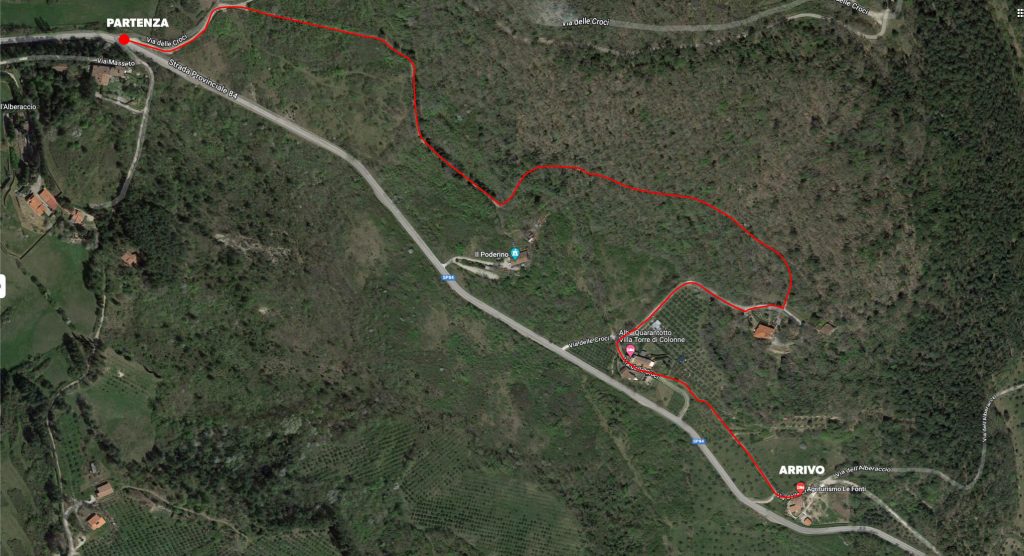
LANDSCAPES AND NATURALISTIC FEATURES
The protected area of Poggio Ripaghera and S. Brigida, in which the Agriturismo “LE FONTI” is located, extends for 817 hectares, incorporating within it, a land rich in social and natural history, as well as in the artistic and monumental heritage. In particular, the area includes the southern and western slopes of Poggio Ripaghera (914 mt), Poggio Abetina (857 mt) and Monte Rotondo (773 mt), including the cool and shady Hell Valley to the east. The woods are characterized by beech, chestnut, oak and American fir trees, which are found in the highest part while in the lower part of the area there are Turkey oaks, black hornbeams, pines and numerous species of shrubs typical of the Mediterranean scrub. These woods are crossed by numerous well-marked trails that allow visitors to the farm to make pleasant and long hikes in absolute safety. In the southern part of the area, there are extensive pasture-meadows that are interspersed with olive groves and vineyards, whose products are of high quality. From a naturalistic point of view, the protected area encloses in a relatively small space, forest environments that are very different one from each other, enriched by flora and fauna of great interest. In the heart of the protected area there is a real botanical rarity, consisting of one of the only two Italian “stations” for the conservation of the ”
Cistus Laurifolius“, or Flower of the Madonna, so called because the path where it is encountered leads to the Sanctuary of the Madonna del Sasso; on the same mule track you meet the Liriodendro or Tulip Tree. This is a large tree, sometimes over 30 mt in height, belonging to the genus of the Magnoliaceae; it is so called because it has a cupped inflorescence, similar outwardly to the one of the tulip. Walking along these ancient mule tracks, you cross a centuries-old chestnut wood which has been wisely recovered and offers extraordinary landscape views. In these woods, which surround the LE FONTI farmhouse, there are also interesting buildings, called “burraie”: these are small stone buildings, without windows, almost always partially buried and with a characteristic opening for the air placed above the entrance door. Used mainly between 1750 and about 1950, the burraie consisted of one or two rooms, where fresh water from a nearby spring flowed into tubs and trays for handling and storing the butter.
Agriturismo Le Fonti
via degli Alberacci 7 Pontassieve (FI)
tel. 376 0546711
info@agriturismolefonti.it
PIVA 06680590483
Copyright ® Agriturismo Le fonti 2022
fatto con amore da esociety marketing


